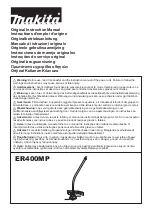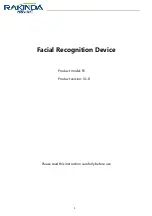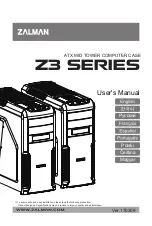
Page 10
Studio Reference
IIIII
&
II
II
II
II
II
Professional Studio Amplifiers
3 Installation
3.1 Mounting
Studio Reference amplifiers are designed for standard
19 inch (48.3 cm) rack mounting or stacking without a
cabinet. In a rack, it is best to mount units directly on
top of each other. This provides the most efficient air
flow and support. If the rack will be transported, we
recommend that you fasten the amplifier’s back panel
securely to the rack to help support the unit’s weight.
3.2 Cooling
Your amplifier has an internal variable speed fan that is
controlled to match the unit’s real-time cooling needs.
With proper installation and typical studio use, the fan
may never need to run. For best results, you should fa-
miliarize yourself with its cooling requirements.
Here are some tips to help keep your amplifier cool.
First, never block the amplifier’s front or side air vents.
If the amplifier is rack-mounted, its sides should be at
least 2 inches (5 cm) away from the cabinet (see Fig-
ure 3.3). Also, open rack spaces should be covered to
prevent heated air from the side vents from being
drawn out the front of the rack into the front air intake.
You will know when your
Studio Reference amplifier
has sufficient cooling because its
ODEP indicators will
be brightly lit. If the amplifier’s
ODEP indicators dim or
turn off, overly demanding conditions are forcing it to
protect itself from overheating. If you experience a
cooling problem, you should consider several factors
that may be contributing to the problem, including load
impedance, air flow and ambient air temperature.
Low-impedance loads generate more heat than higher
impedance loads. To avoid impedance-related cooling
problems, connect loads to each channel with a total
impedance of at least 2 ohms in Stereo, 4 ohms in
Bridge-Mono, and 1 ohm in Parallel-Mono mode (see
Section 3.3 for wiring instructions). If your loads are
reasonable and you still have a cooling problem, check
for shorts in the loudspeaker cables, and look for prob-
lems with air flow or ambient air temperature.
Air flow restrictions are the most common cause of inad-
equate cooling. Restrictions may result from improper
Fig. 3.3 Top View of a Rack-Mounted Unit
Fig. 3.2 Removing an End Cap
Fig. 3.1 Mounting Dimensions
19 in
(48.3 cm)
16 in
(40.6 cm)
7 in
(17.3 cm)
SIDE VIEW
1.4 in
(3.6 cm)
®
FRONT VIEW
Before proceeding, make sure the meter switches are
set to your liking. The front panel assembly must first
be removed to change these switches, so it is easier to
do before the unit is mounted (see Section 4.4).
By now, you may be looking for rack ears. The rack
ears are covered by two attractive end caps which are
held in place by phillips screws (see Figure 3.2). To
use the rack ears, remove the screws and lift off the
caps. With sufficient side clearance, you can reinstall
the end caps once the amplifier is mounted in the rack.
AIR
FLOW
AIR FLOW
AMPLIFIER
(TOP VIEW)
RACK
CABINE
6 in
2 in
MIN.
IMPORTANT: Be sure the back of
the amplifier is supported.
17 in
AIR
FLOW











































